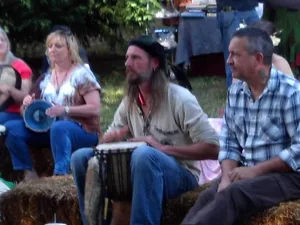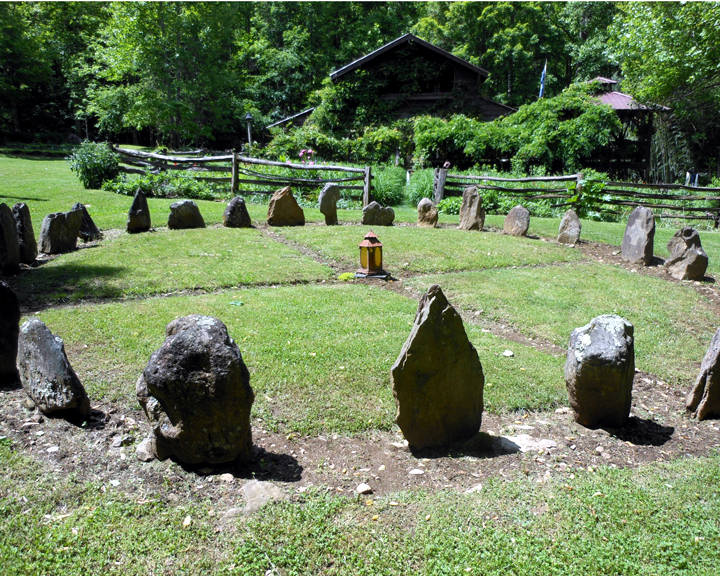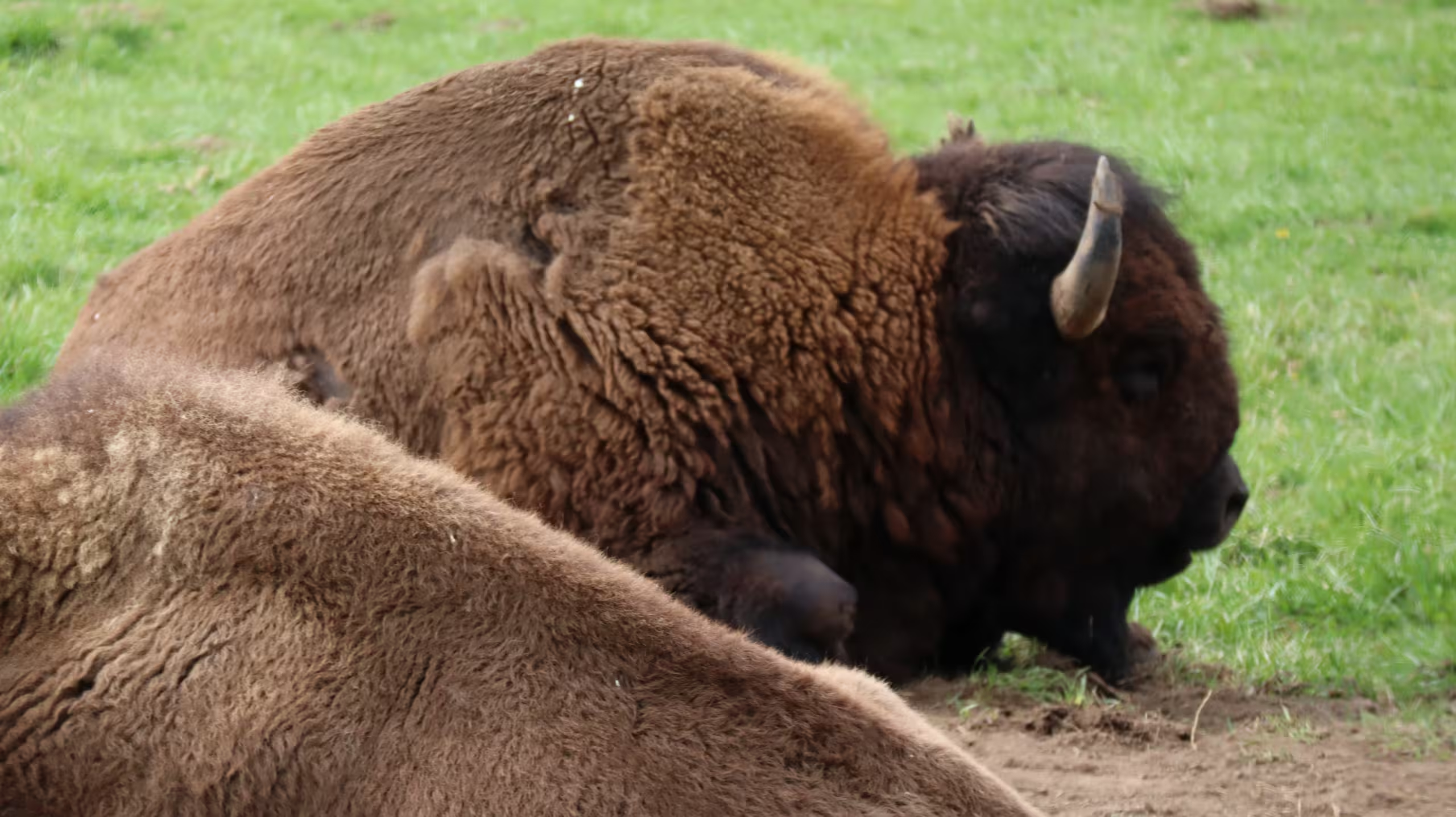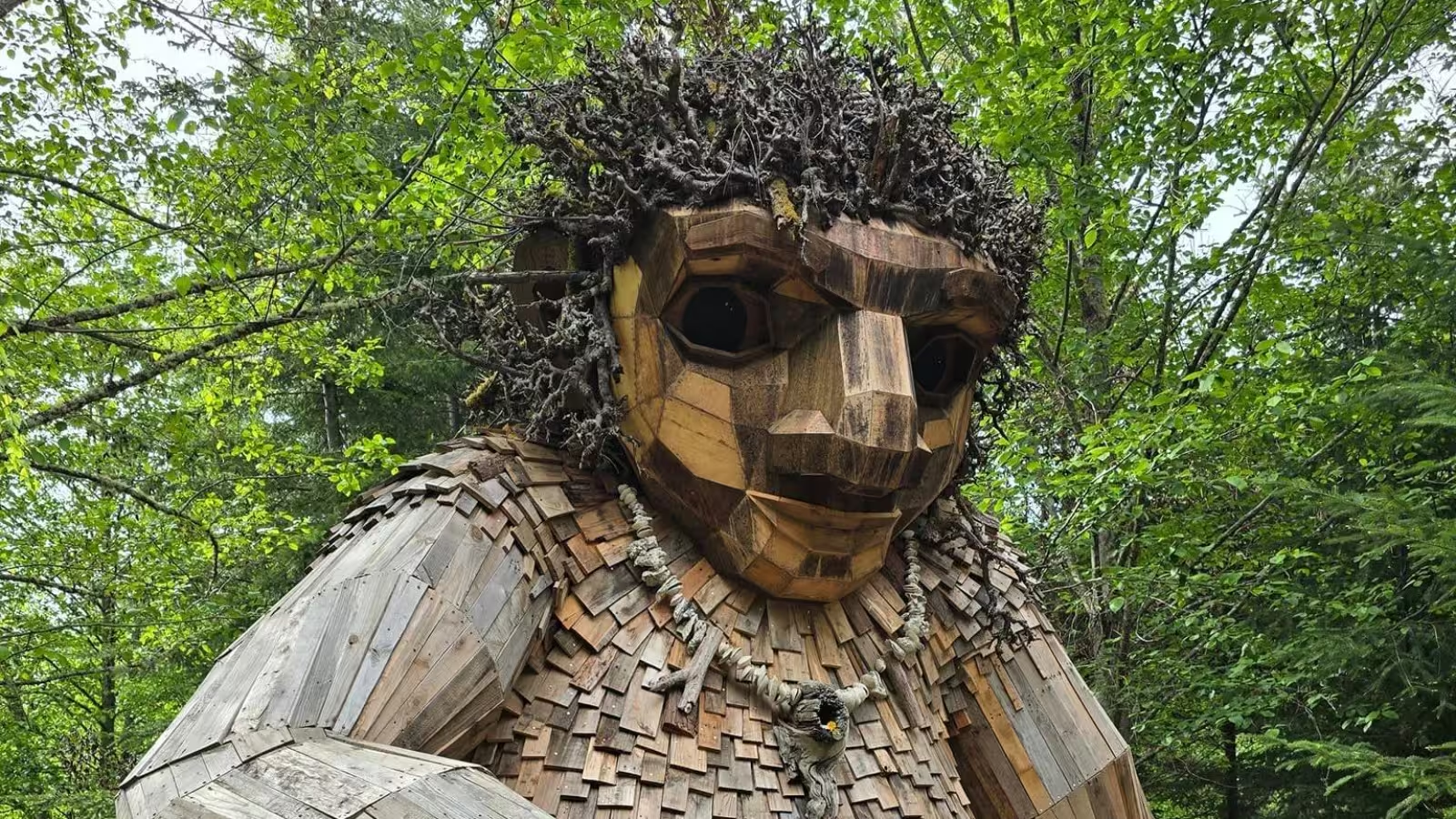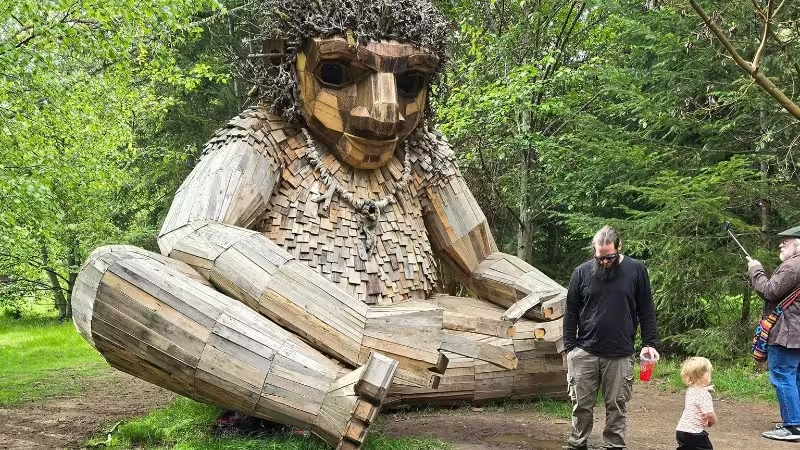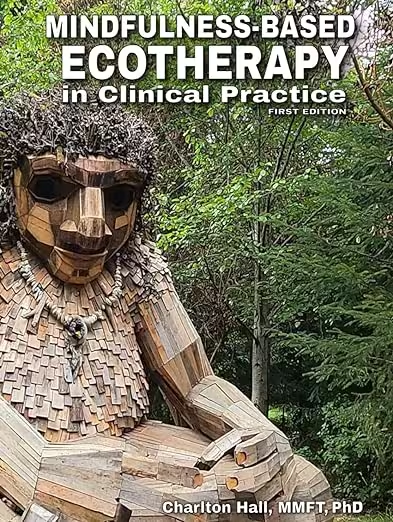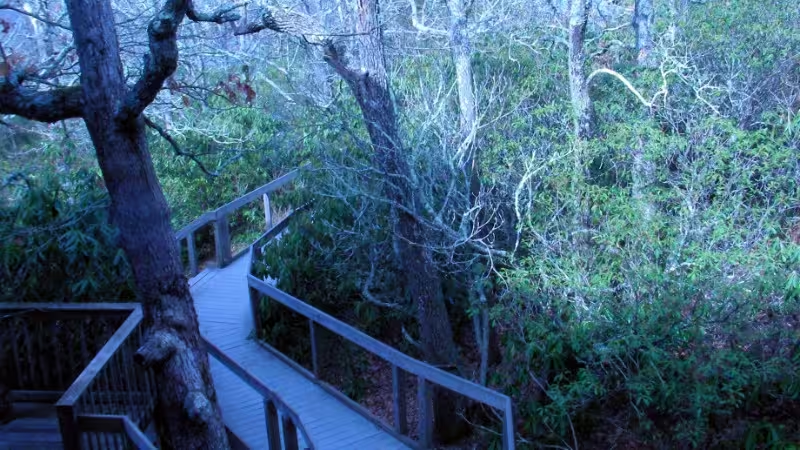
The Monomyth was the creation of Joseph Campbell, who was an American mythologist best known for his works and lectures in comparative mythology and comparative religion. His personal philosophy is often summarized in the phrase, “Follow your bliss.”
One of his areas of study was the archetypal nature of world mythologies. He noted that myths from around the world followed a pattern. Campbell conceptualized this pattern, calling it the monomyth. The monomyth is the archetypal mythological journey of discovery. The monomyth is often referred to as the Hero’s Journey. Elements of this journey show up in sacred texts of most religions. It is the journey of Moses, of Jesus, of Krishna, of Mohammed, of the Buddha, of King Arthur, and even of Luke Skywalker. George Lucas relied heavily on the works of Joseph Campbell when crafting the original Star Wars saga.
The template for the monomyth, along with an explanation of the phases, is outlined below. There are three major phases, with steps for each phase. The three major phases are: Departure, Initiation, and Return.
As you read the descriptions below, see if you can identify where you might be in your own ecospiritual path.
Phase One of the Monomyth: Departure
In the Departure phase, the hero leaves the familiar on a journey of self-awareness that will ultimately make or break him. The Departure phase is about a way of doing things differently than they have been done in the past. It is an awakening to the world of wider possibilities. For an ecospiritual seeker, it means challenging your own accepted notions of what spirituality means. It means going against the dogma and finding your own individual path. It means trusting yourself and your own supernatural aid enough to take that step.
The Call to Adventure
The Call to Adventure is the catalyst that sets the Hero’s Journey in motion. It could be an inner need to change one’s circumstances, or it could be an external event that triggers the journey. For Buddha, it was the inner desire to seek enlightenment. For Luke Skywalker, the Empire forced his hand. In either case, the hero recognizes that something fundamental has changed, and he/she can never go back to the way things were.
Refusal of the Call
Change is scary. The comforting thing about the familiar is its familiarity; we know what to expect. This can even be true if the familiar situation is grim. Such a sentiment is often expressed in the phrase, “Better the devil you know than the devil you don’t know.”
The familiar, however uncomfortable it may be, is at least familiar. When faced with change, there is an element of the unknown that must be reckoned with. No matter how bad things are, the thought that they could potentially get worse always hovers in the back of our minds. By making a change, chance has entered the equation. What may you expect to happen when walking into uncharted territory? Things might get better, but they might get worse as well. Because of this doubt and uncertainty about where the path may lead, many people refuse the call to adventure.
Supernatural Aid
Sometimes when we get stuck in our refusal, we need a little push to get going again. When this happens, the universe tends to align the stars in such a way that we have to act. If we choose not to walk through the open door out of fear or uncertainty, the universe begins to close all other doors one by one until we have no choice but to walk through the open door before us.
This supernatural aid doesn’t have to come from some deity. Sometimes it is just as simple as a moment of inspiration or a flash of insight. Whatever it is, it sets our feet on the path in spite of our reluctance to embrace the journey.
The Crossing of the First Threshold
As Bilbo Baggins says, “It’s a dangerous business, going out your door. You step into the road, and if you don’t keep your feet, there is no knowing where you might be swept off to.”
For every journey there is a first step. The Crossing of the First Threshold is that first step. The significance of that first step is that it indicates a commitment to the journey. The reluctance and refusal are over, and the intention has been set. Once your intention has been determined, and you announce your intention to the Universe, there is no going back.
Belly of the Whale
To learn new ways of being, we must first cast off our assumptions about the way things work. Our assumptions create our perceptions, and our perceptions create our reality. If we’re journeying to new realities, our perceptions and assumptions have to be discarded. This can be an especially difficult task since many of our assumptions and perceptions are involved in our own sense of identity. If we cast them off, we lose who we are. But to become someone new, we must lose who we are. Percival had to cast off his armor before he could receive the Holy Grail. Since he was a knight, this meant casting off all outward appearances of his former identity in order to discover something new.
Jonah spent three days in the Belly of the Whale after his Refusal of the Call. This was Jonah’s casting off of his former identity so that he could step into his new role as a spiritual leader. This time in the whale’s belly is a time of reflection and of challenging preconceived notions before initiation into a wider world.
Phase Two of the Monomyth: Initiation
In the Initiation phase, the hero must “die to herself.” Many religious and shamanic rituals involve a symbolic death and rebirth to a new way of being. Initiation is an emptying of your cup so that it may be refilled with new knowledge. For a spiritual seeker, Initiation means being open to new experiences and being willing to experiment with new ways of being.
The Road of Trials
“The word ‘ashes’ contains in it a dark feeling for death; ashes when put on the face whiten it as death does…some men around thirty-five or forty will begin to experience ashes privately, without ritual, even without old men. They begin to notice how many of their dreams have turned to ashes.”
–Robert Bly, Iron John: A Book about Men
The Road of Trials begins with what Robert Bly calls “Time in the Ashes,” or “Ashes Time.” Sometimes things get worse before they get better. The Greek katabasis literally means “to go down” or “to descend.” Katabasis is the idea that it is always darkest before the dawn. As the spiritual seeker’s old identity is stripped away in the Belly of the Whale, there is nothing yet with which to replace it. To a spiritual seeker, this katabasis may feel like the end of the world. Sometimes it manifests as a sense that one’s entire life has been meaningless up until this point. Author Richard Bach, in his bestseller Jonathan Livingston Seagull, describes this feeling best: “I gave my life to become the person I am right now. Was it worth it?”
The Meeting with the Goddess
“For she is the incarnation of the promise of perfection, the soul’s assurance that, at the conclusion of the exile in a world of organized inadequacies, the bliss that once was known will be known again…”
– Joseph Campbell, The Hero’s Journey
The Goddess here isn’t necessarily an actual divine entity, although she can be. Since the heroes in most of the myths Campbell studied were heterosexual males, the Meeting with the Goddess represents the ideal partner. Since we’re talking about a spiritual and metaphorical level here, the Meeting with the Goddess symbolizes the idea of completeness and perfection. After having our former identities stripped away in the Belly of the Whale, and after our Initiation in the Road of Trials, the Goddess appears to us in ideal form with the promise of what could be, if we persevere. The Goddess represents perfect love. It is a love that is truly unconditional; a love that applies not only to others, bur to self as well.
Woman as Temptress
Again, the gender bias of referring to the Temptress as a woman is a by-product of centuries of male heroes in mythology. The Temptress can just as easily be a Tempter, as when Lucifer tempted Jesus with all the wealth of the world if he would give up his seeker’s journey.
Whichever sex you choose to picture the Tempter/Temptress, its purpose is to entice you with the easy way out. The Temptress manifests in shortcuts, laziness, and leaving things half-done. The lesson of the Temptress is that if we cheat by taking a shortcut on the road to enlightenment, we are ultimately only cheating ourselves.
The Temptress will test your integrity and character, but there is a purpose in this trial. By testing your character, the Temptress gives you an opportunity to display your honor. True honor is how we act when nobody is watching, and the Temptress gives us the opportunity to practice that honor. She will attempt to sway us from the path and try to prevent us from owning the darker parts of ourselves. If this happens, we will fail to achieve Atonement with the Father.
Atonement with the Father
The poet Robert Bly, in Iron John, talks about the son receiving an injury from the father. Often it is this injury that sets the son off on a journey of self-discovery in the first place. In primal cultures this injury is sometimes ritualized. In some African cultures, the father knocks out one of the son’s teeth in a rite of passage ritual. In some Native American cultures, the son receives some other form of injury, as in the ritual tearing of the pectoral muscles practiced during the Sun Dance of the Lakotas. This dark aspect of fatherhood is reflected in the idea of the Shadow from Jungian psychology (more on this later). The psychoanalyst Carl Jung believed that all human beings have the potential for all behaviors. The most moral among us have the potential to become serial killers, and the most immoral among us have the potential to redeem themselves. Since, according to Jung, all humans have the potential for all behaviors, the behaviors we choose not to express are suppressed. The part of the psyche in which these behaviors are repressed is what Jung called the Shadow. The behaviors we choose to express, the mask we wear in our daily lives, is what Jung called the Persona.
The Atonement with the Father is the integration of the Shadow with the Persona. Although the Shadow is where our dark, evil impulses lie, it is also where our creativity lies. Without it, we can have no imagination. So Atonement is literally “at-ONE-ment,” meaning that the Shadow and the Persona become one. This does not mean that we consciously choose to act on those evil impulses. It means that by acknowledging their existence in the first place, we can move towards mastering them. When they are mastered, we can achieve apotheosis.
Apotheosis
This word, Greek in origin, means, “To deify,” or to “become godlike.” According to Joseph Campbell, apotheosis is, “The pattern of the divine state to which the human hero attains who has gone beyond the last terrors of ignorance.”
Apotheosis is the ability to rise above the chess board and recognize that one has been a pawn in the game. By seeing the whole board, we gain a new perspective. It is a shift in perspective; the solving of the puzzle of existence. Once the hero has achieved apotheosis, he can never go back to the way things were before. Apotheosis is the gaining of a godlike wisdom. Adam has eaten the apple, and gained the godlike knowledge of good and evil.
The Ultimate Boon
The Ultimate Boon is the treasure at the end of the journey. It is the Holy Grail; the elixir of life; the reason for the journey in the first place. For a spiritual seeker, the Ultimate Boon may be the gifts of wisdom and enlightenment.
Phase Three of the Monomyth: Return
In the Return Phase, the hero has gained wisdom about the nature of reality and consciousness and is now faced with the challenge of returning to the world to teach those who are willing to listen. It is the process of coming home with the Holy Grail. It is the act of bringing the Ten Commandments down off the mountaintop. It is the act of helping others to achieve what the hero has achieved while avoiding the temptation to turn them into carbon copies of himself. For a spiritual seeker, this means applying lessons learned in the spiritual realm to daily life. It means learning to see the bigger picture and to trust the vision.
Refusal of the Return
When you have tasted the milk and honey of Paradise, why would you want to leave? When you’ve experienced perfection, it can be difficult to summon the energy to return to an imperfect world. There is also the consideration of trying to communicate your experience to others who have not had the same experience. You will lack a common frame of reference. Once your perceptions have been transformed and you learn to see things in a new way and speak a new language, it can feel like it’s impossible to communicate with those who haven’t learned the same language.
In Plato’s Cave Allegory, the Seeker learns to see beyond the illusion and into the real nature of things. In Plato’s Cave, these illusions take the form of shadows projected on a wall. The shadows are of people. The shadows are not the people; they are merely an illusion and a projection of the real people behind the shadows. In Plato’s Cave, the Seeker sees the real people behind the shadows for the first time. But when he tries to explain the concept of real people to the others in the cave, they cannot understand what he means, because they lack a common frame of reference.
A return to the “real” world of shadows after living for a time in the world of true substance can be a frustrating experience if you hope to share your newfound wisdom with others. Because of this, it is easy to refuse the return, especially if you have attained paradise along your journey.
The Magic Flight
“If the hero in his triumph wins the blessing of the goddess or the god and is then explicitly commissioned to return to the world with some elixir for the restoration of society, the final stage of his adventure is supported by all the powers of his supernatural patron. On the other hand, if the trophy has been attained against the opposition of its guardian, or if the hero’s wish to return to the world has been resented by the gods or demons, then the last stage of the mythological round becomes a lively, often comical, pursuit. This flight may be complicated by marvels of magical obstruction and evasion.”
-Joseph Campbell
Sometimes the hero can escape with the Ultimate Boon. But sometimes forces conspire to prevent the hero from returning. Even paradise can be a prison if you can’t leave when you wish to leave.
For the spiritual seeker, the Magic Flight may consist of letting go of forms of spirituality that are no longer meaningful. One warm spring day. I was at the lake with the woman I would later divorce. We were having a picnic by the lake. She’d brought along her collection of talismans and other New Age paraphernalia and was busily trying to read portents in a deck of Tarot cards. Unfortunately, she had the habit of consulting the deck for every little aspect of her life to the point that it was almost an obsessive-compulsive disorder. It’s fine to see portents from time to time, but she couldn’t seem to see anything else.
As we sat there, she dealing out her Tarot and obsessing over it, a cardinal appeared on a tree branch just above our heads. Seeing an opportunity for another omen, she looked up at the bird and said, “Hi, do you have a message for me?”
The bird, in response, cocked her head sideways and dumped a prodigious load right onto her head.
I laughed, looked at her and said, “There’s your message.”
Spirituality is only good when it isn’t taken too seriously. This is the ultimate lesson of ecospirituality. If you find yourself in a space where the tools have become more important than the message, then you may be in need of a Magic Flight.
Rescue from Without
As the end of the path draws nigh, the hero may be exhausted and spent from the journey. If you have cast off the weary world, you are probably in no hurry to return to it. If this is the case, then the world may have to come and get you. For a spiritual seeker, this rescue from without may come from a friend or a family member who needs the wisdom you have gained from your journey.
The Crossing of the Return Threshold
The Return Threshold is the doorway that lies between the spiritual world and the “real” world. In order to cross the return threshold, the spiritual seeker must complete three tasks. First, she must retain all the wisdom she gained on the quest so that she may share it with others. Next, she must find a way to integrate that wisdom into a human life without pain or regret. Finally, she must find a way to share that wisdom with the rest of the world in such a way that they receive it with welcome. This last task is especially important, as we humans tend to make martyrs out of messiahs. This is another powerful way that coyote magic may be used. Sometimes people have to be “tricked” into enlightenment to bypass their preconceived notions of what is and what should be.
Master of Two Worlds
Once your basic needs of food, clothing, shelter and love have been satisfied, how much do you truly need? We often confuse our wants with our needs. The Master of Two Worlds has learned to reconcile these dualities. Such a Master has found a balance between the spiritual world and the material world. This seeker has also found a balance between his Shadow and his Persona; his light half and his dark half. Such a person has moved beyond seeing the world in black-and-white terms, and can see the gray areas, where most of life happens.
Georg Wilhelm Friedrich Hegel’s famous philosophical device, commonly known as the Hegelian Dialectic, is a triad consisting of thesis, antithesis, and synthesis, where the thesis is an idea, the antithesis is the idea’s opposite, and the synthesis is the blending of the two. For example, if the material world is the thesis, and the spiritual world is the antithesis, then a synthesis of the two would be finding a way to live spiritually in the material world. The Master of Two Worlds has achieved this synthesis.
Freedom to Live
Once you’ve conquered your fear of death, what else can stand in your way? If the soul is the only thing in the Universe that is truly indestructible, then death is just another way of being. Even if you are atheist or agnostic, and have no belief in an afterlife, this is still true from the point of view of your own consciousness. If this life is all you will ever know, and there is no afterlife, then it is impossible to ever be conscious of your own death; therefore there is no way you could ever know that you have died. How can you be conscious of your own death, if death is the end to consciousness? So from the perspective of your own consciousness, you are immortal for all practical purposes. When you die, your Universe ceases to exist, and you are no longer the Center. With this knowledge of death comes the Freedom to Live. Soul musician Ray Charles said, “Live every day like it’s going to be your last, because one of these days you’ll be right.”
Freedom to Live means that you have mastered death.
A ecospiritual seeker can use this monomyth template as a road map for following the way of the ecospiritual shaman, or any other spiritual path. As you look over the phases and steps above, you can probably readily identify where you are on the journey. You can also identify what lies ahead, and get some idea of what skills and tools you will need to meet those upcoming challenges. In the weeks that follow we will go into more depth about what some of those challenges might be and how to overcome them.
The rest is up to you!

